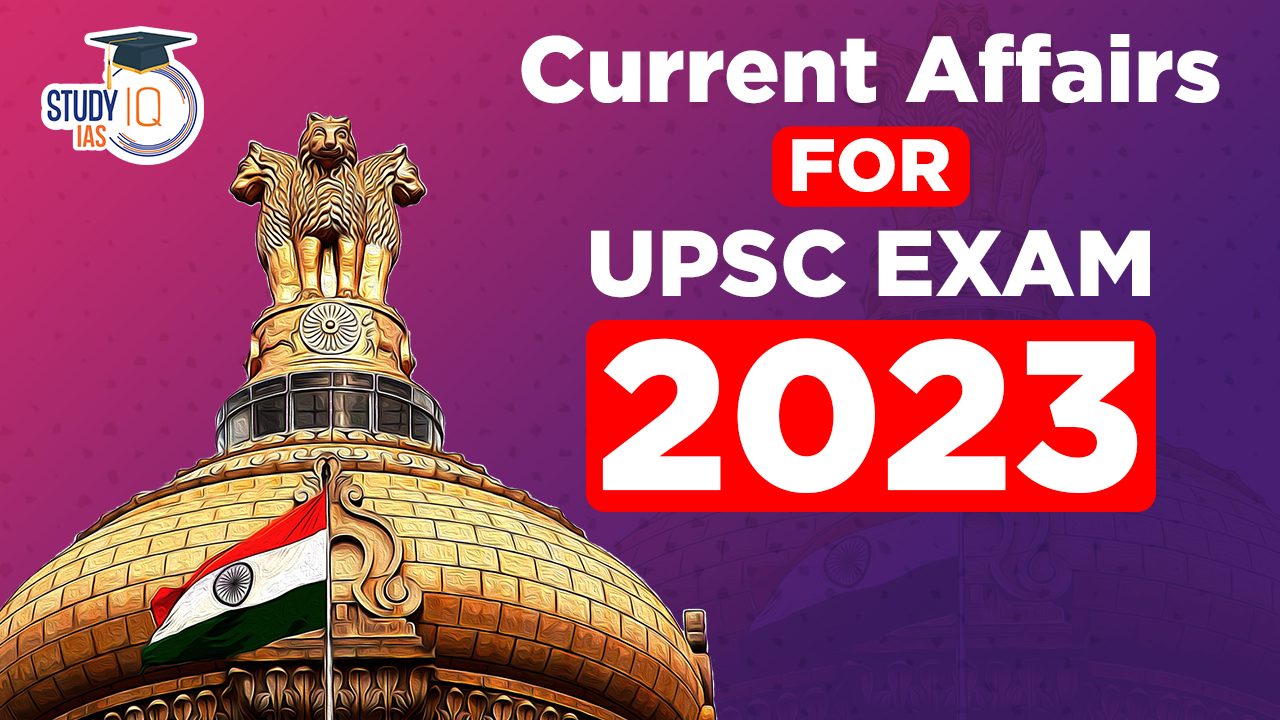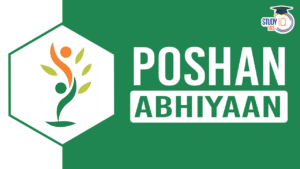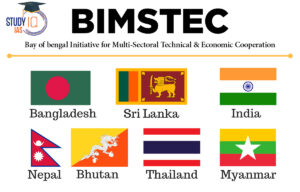Table of Contents
International Maritime Organisation
Context: India has been re-elected to the International Maritime Organisation (IMO) Council, marking its continuous service at IMO.
Overview of the International Maritime Organisation (IMO)
- Description: The IMO is a specialised United Nations agency focused on regulating global shipping and preventing marine pollution from vessels.
- Established in: 1948 at a UN conference in Geneva; began operations in 1958.
- Headquarter: London, United Kingdom.
- Member States: 175 Member States and three Associate Members.
- India has been a member since 1959.
- Primary Functions:
- Regulatory Framework Development: Aims to establish a fair, universally adopted, and implemented regulatory framework for the shipping industry.
- Legal Responsibilities: Addresses legal issues, including liability, compensation, and facilitation of international maritime traffic.
- Structure
- Operational Execution: The International Maritime Organization’s activities are carried out by the IMO Secretariat, Member States, Intergovernmental Organizations (IGOs), and Non-Governmental Organisations (NGOs).
- IMO Secretariat: Oversees daily operations, including organising and preparing meetings, under the leadership of the Secretary-General and a team of 300 international civil servants.
- Representation: Member States, IGOs, and NGOs participate in IMO meetings, encompassing the Assembly, Council, five Committees, and seven Sub-Committees.
- Governing Bodies: The Assembly, meeting biennially, is the highest governing body.
- The Council, composed of 40 members elected for two years, functions as the executive organ.
- Committees and Subcommittees: IMO’s operations are executed through five main committees and various subcommittees, responsible for developing international conventions, codes, resolutions, and guidelines.
We’re now on WhatsApp. Click to Join
India’s Involvement with IMO
- Council Membership: India is categorised in Category B of the IMO Council, reflecting its strong commitment to maritime affairs.
- Vision 2030 and Amrit Kaal Vision 2047: These initiatives aim to boost India’s representation at the IMO, including appointing permanent representatives in London and enhancing its maritime global standing.
- Strategic Initiatives: Establishing a dedicated IMO cell, appointing a permanent representative at the IMO headquarters, and implementing the BIMSTEC Master Plan are part of India’s strategic initiatives in maritime affairs.
|
World Maritime Day |
| Celebrated annually on the last Thursday of September to underscore the significance of shipping and maritime activities. |
International Cotton Advisory Committee
Context: The Ministry of Textiles is hosting the 81st Plenary Meeting of the International Cotton Advisory Committee (ICAC) in the Jio World Convention Centre, Mumbai.
Overview of the International Cotton Advisory Committee (ICAC)
- Nature: An intergovernmental entity recognized by the UN, comprising nations involved in cotton production and consumption.
- Establishment: Created in 1939, currently
- Members: 28 member countries.
- Headquarter: Washington, United States
- Founding Members: India is a founding member, alongside nations like Brazil, Egypt, France, Sudan, and the USA.
- Two of the ten largest producers– China and Turkmenistan are not members.
- Annual Meetings: The ICAC Plenary Meeting is hosted annually by member countries upon their invitation.
- Function: Serves as a platform for global discussions pertinent to the cotton industry.
- Role: Facilitates dialogue among industry and government leaders from cotton-producing, consuming, and trading nations on issues of shared interest.
Key Aspects of the 81st ICAC Plenary Meeting
- Theme: The meeting’s theme, “Cotton Value Chain: Local Innovations for Global Prosperity,” underscores the shift towards ecological sustainability alongside economic growth.
- Objective: The meeting aims to be a conduit for global exchange of innovative ideas, best practices, and experiences in enhancing productivity, climate resilience, and circularity in the cotton industry.
- Focus Area: Special emphasis is placed on local innovations and advanced technologies that, while developed locally, possess global relevance and the potential to enrich the entire cotton value chain.
- India’s Ambition: The Indian Union Minister of Textiles highlighted India’s goal to become the top cotton producer globally and to elevate its productivity to the standards of nations like Australia.
Cotton Textile Industry in India: An Overview
- Cotton Production: India has the largest area under cotton cultivation and is currently the second-largest global producer, representing about 25% of the world’s area under cultivation.
- Regional Distribution: Maharashtra has the highest area under cultivation (41.2 lakh ha), followed by Gujarat (27.1 lakh ha) and Telangana (17.9 lakh ha), accounting for 65% of the total cotton acreage in the country.
- Government Schemes for the Cotton Textile Sector:
- Scheme for Integrated Textile Parks (SITP),
- Integrated Skill Development Scheme (ISDS),
- Integrated Processing Development Scheme (IPDS),
- Market Development Assistance (MDA), and
- Market Access Initiative (MAI).
- Industry-led Growth Initiatives:
- PM MITRA (PM Mega Integrated Textile Regions and Apparel) Parks,
- National Technical Textiles Mission, and
- Drone-based pesticide spraying supports the growth and innovation of the cotton textile sector.
| Kasturi Cotton Bharat Initiative |
|
Geneva Convention
Context: Ukraine accuses Russia of killing surrendering soldiers
About Geneva Conventions
- Formation and Evolution: Initially developed in 1864, the Conventions have been updated several times, most notably in 1949 after World War II.
- These updates resulted in the four treaties and three additional protocols that exist today.
- The Four Geneva Conventions (1949):
- First Convention: Focuses on the treatment of wounded and sick soldiers on land during war. It sets out the respect for and humane treatment of military personnel who are out of action due to sickness or injury.
- Second Convention: Similar to the first, but applies to wounded, sick, and shipwrecked military personnel at sea.
- Third Convention: Pertains to the treatment of prisoners of war (POWs). It stipulates a wide range of protections, including humane treatment, adequate food and healthcare, and the right to communicate with relatives.
- Fourth Convention: Concerns the protection of civilians, including those in occupied territories. It prohibits inhumane treatment and enforces protections against dangers arising from military operations.
- Additional Protocols:
- Protocols I and II (1977): These expand on the principles and provisions of the original conventions, addressing the protection of victims in both international (Protocol I) and non-international (Protocol II) armed conflicts.
- Protocol III (2005): Introduces an additional emblem, the Red Crystal, alongside the Red Cross and Red Crescent.
- Principles and Provisions:
- The Conventions and their Protocols establish rules protecting people who are not participating in hostilities (such as civilians, health workers, and aid workers) and those who are no longer participating (such as wounded soldiers and POWs).
- They cover a wide range of wartime issues, including the care of the wounded, the treatment of POWs, the protection of civilians, and the conduct of hostilities.
- Global Acceptance:The Geneva Conventions have been ratified by 196 states, including all UN member states.
- The four conventions and first two protocols of the Geneva Conventions were ratified by the Soviet Union, not Russia.
- Enforcement:While the Conventions themselves do not include specific enforcement mechanisms, they lay the groundwork for international humanitarian law and are used as the basis for international war crimes tribunals and other legal proceedings.
Cyclone Michaung
Context: According to the Indian Meteorological Department (IMD), Cyclone Michaung is expected to make landfall near the Bapatla district of Andhra Pradesh.
About Cyclone Michaung
- Cyclone Michaung is a tropical cyclone that is tracking northwest in the western Bay of Bengal.
- ‘Michaung’ is named after a suggestion provided by Myanmar which means strength and resilience.
- Cyclone Michuang will become the fourth Bay of Bengal cyclonic storm and the sixth cyclone formed in the Indian Ocean in 2023.
- The National Crisis Management Committee (NCMC) recently convened to assess the readiness of State governments and Central Ministries for the approaching cyclone ‘Michaung’ in the Bay of Bengal.
- The India Meteorological Department (IMD) reported the storm’s current location and projected path, indicating potential landfall on coastal Andhra Pradesh.
- The NCMC is a committee set up to coordinate and implement relief measures and operations in the wake of a natural calamity.
- The NCMC coordinates and oversees the response to major crises, emergencies, and disasters that may affect India.
- NCMC is headed by the Cabinet Secretary.
Essequibo Region
Context: Venezuela’s move to hold a referendum on whether it should exercise sovereignty over Essequibo, a vast, oil-rich disputed region that is now part of neighbouring Guyana.
Overview
- Location and Size: Essequibo is situated in the western part of Guyana, South America. It encompasses a large portion of the country’s land area, making it one of the largest regions in Guyana.
- Topography: The region features a diverse topography that includes coastal plains, large tracts of dense rainforest, and a part of the Guiana Highlands. The Pakaraima and Kanuku mountain ranges are significant highland areas in the region.
- The Essequibo River: This river is a defining feature of the region. It flows northward through the heart of Guyana, emptying into the Atlantic Ocean. This region is named after the Essequibo River, which is one of the longest and widest rivers in South America.
- Climate: The climate of the Essequibo region is typically equatorial, characterised by high humidity and significant rainfall. The area experiences two rainy seasons, from May to August and from November to January.
- Biodiversity: The region boasts rich biodiversity. Its dense rainforests are home to a wide variety of flora and fauna, including many endemic species. The Iwokrama Rainforest, an important conservation area, is partially located in this region.
Biotechnology Research and Innovation Council
Context: Addressing the first-ever meeting of the BRIC Society Dr Jitendra Singh said that the time has come for defining “Bio-vision” for Bharat.
An Overview
- Foundation: BRIC was established by subsuming 14 Autonomous Institutions of the Department of Biotechnology (DBT) into one Apex Autonomous Body.
- This was approved by the Union Minister Dr. Jitendra Singh, in line with Prime Minister Modi’s vision of “Minimum Government, Maximum Governance” and for greater integration of ideas and institutions.
- Nodal Ministry: The Department of Biotechnology (DBT), under the Ministry of Science and Technology, is the nodal ministry responsible for the creation and functioning of BRIC.
- Aims and Objectives:
- To promote cutting-edge research in biotechnology aligned with national priorities.
- To foster innovation and translation across institutional boundaries.
- To develop indigenous technologies and capabilities following the principles of Atmanirbhar Bharat (Self-Reliant India).
- To initiate multi-disciplinary Ph.D. programs and work in partnership with the Regional Centre of Biotechnology (RCB) for globally competitive interdisciplinary education and research programs in biotechnology.
- To create high-quality biotech Ph.D.’s in India with strong domain expertise.
- Functions:
- Advance cutting-edge efforts in biotechnology by establishing multi-disciplinary research programs across institutional boundaries.
- Expand the scale and scope of research endeavors, taking on complex questions and finding affordable, relevant solutions.
- Initiate immersion-based Ph.D. programs in partnership with RCB.
- Global networking through the International Centre for Genetic Engineering and Biotechnology (ICGEB, New Delhi) to catalyze global multi-organizational interactions.
- Fostering inter-ministerial cooperation and building synergies across institutional boundaries for educational and training programs.


 10 Years of Pradhan Mantri Mudra Yojana ...
10 Years of Pradhan Mantri Mudra Yojana ...
 Poshan Abhiyaan, POSHAN 2.0, Features an...
Poshan Abhiyaan, POSHAN 2.0, Features an...
 BIMSTEC Countries 2025, Area of Cooperat...
BIMSTEC Countries 2025, Area of Cooperat...





















